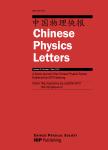版权所有:内蒙古大学图书馆 技术提供:维普资讯• 智图
内蒙古自治区呼和浩特市赛罕区大学西街235号 邮编: 010021

作者机构:State Key Laboratory of Alternate Electrical Power System with Renewable Energy SourcesNorth China Electric Power UniversityBeijing 102206China Institute of PhysicsChinese Academy of SciencesBeijing 100190China Department of Physics and Beijing Key Laboratory of Opto-electronic Functional Materials&Micro-nano DevicesRenmin University of ChinaBeijing 100872China
出 版 物:《Chinese Physics Letters》 (中国物理快报(英文版))
年 卷 期:2025年第42卷第1期
页 面:102-113页
核心收录:
学科分类:07[理学] 070205[理学-凝聚态物理] 0702[理学-物理学]
基 金:supported by the National Natural Science Foundation of China under Grant No.10225417 the National Basic Research Program of China under Grant No.2006CB601003
主 题:alloys microstructure magnetic
摘 要:A high saturation magnetic flux density(Bs)is essential for the development of Fe-based amorphous alloys for electromagnetic devices and ***,achieving a high Bs often compromises the glass-forming ability(GFA)of Fe-based amorphous *** study investigates the effects of ferromagnetic elements(Fe,Co,and Ni)on the microstructure and magnetic properties of Fe86B7C7 amorphous alloys through experiments and ab initio molecular dynamics *** analyzing both the experimental and simulation results,the relationship between the atomic structures,GFA,and magnetic properties of these amorphous alloys was *** results indicate that the GFA of the alloys is correlated with the proportion of icosahedral and body-centered cubic *** addition of Co and Ni not only improved the GFA of the alloys but also effectively increased the overall magnetic moment with an appropriate amount of Co and a small amount of *** increase in the magnetic moment primarily arises from the enhancement of the magnetic moment of Fe atoms,resulting from the redistribution between the spin-up and spin-down electrons of Fe-3d orbits,as well as the strong exchange interactions between Fe and Co and Fe–Ni *** results obtained offer valuable insights into the correlation between the atomic structure and magnetic properties of these amorphous alloys and suggest potential directions for the optimization of Fe-based amorphous alloys.